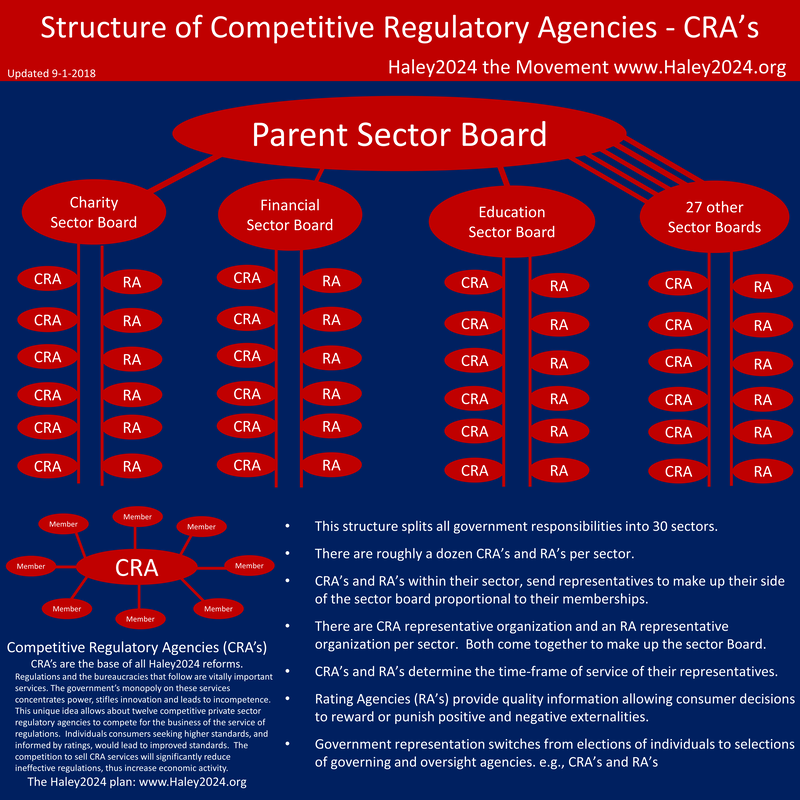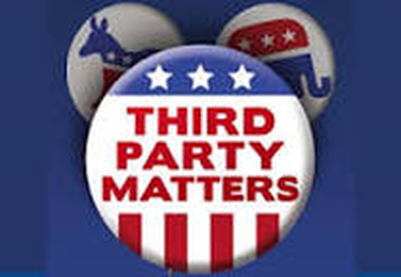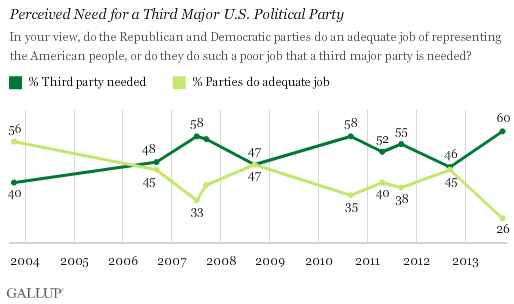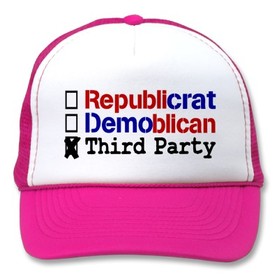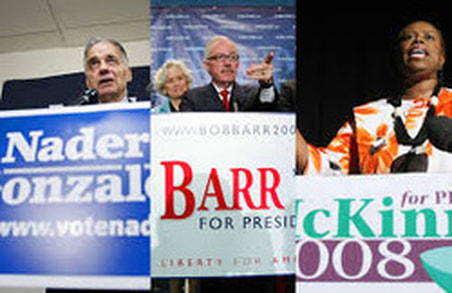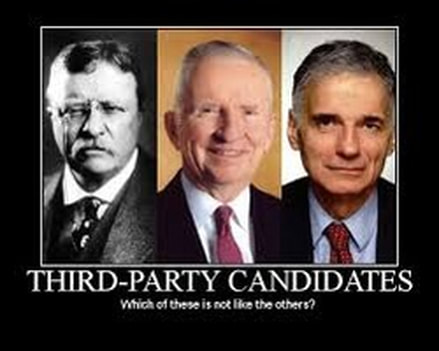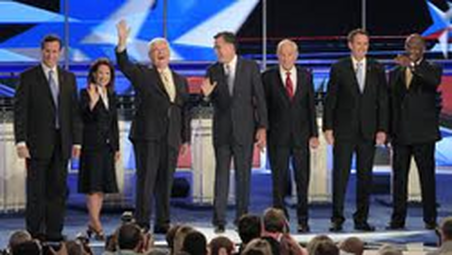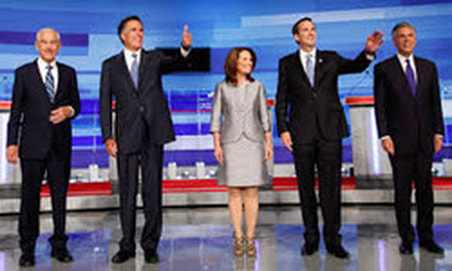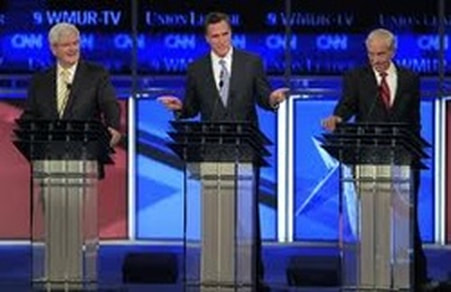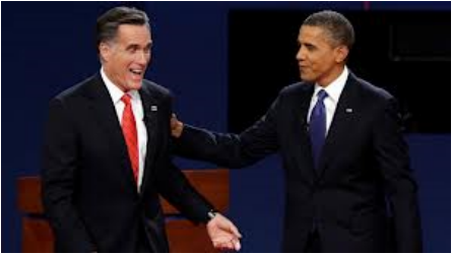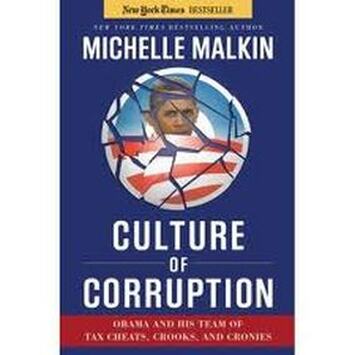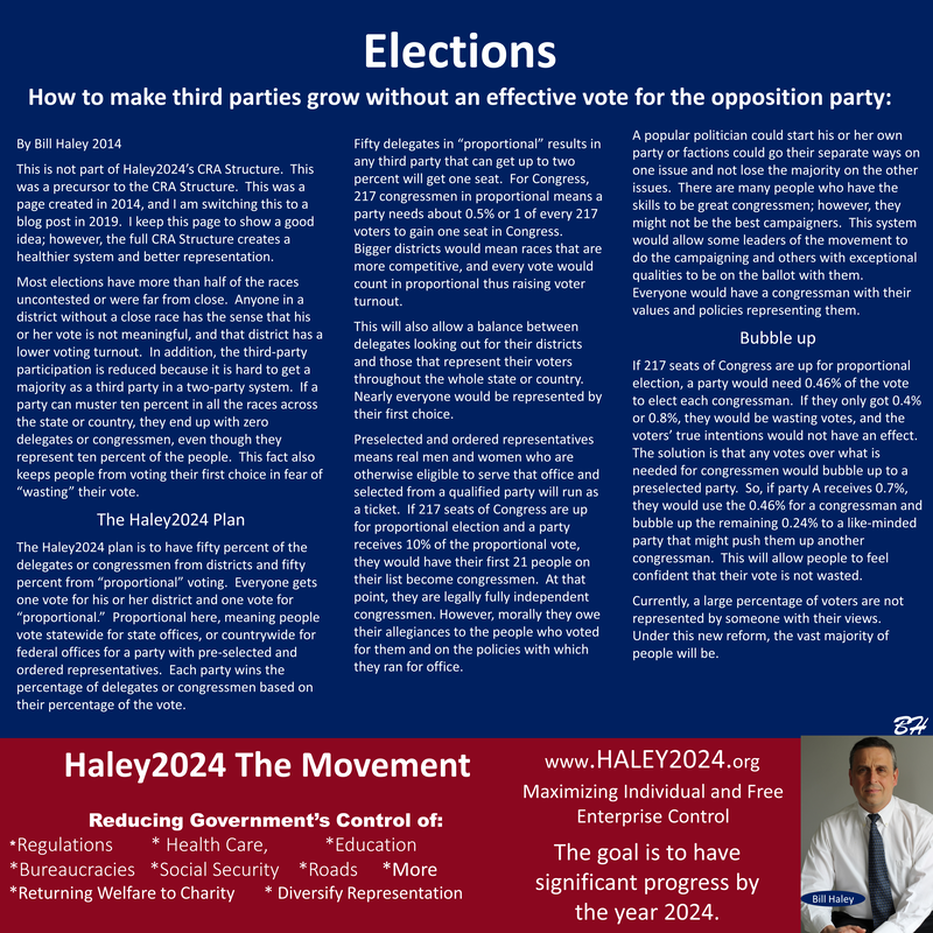How to make third parties grow without an effective vote for the opposition party:
| Most elections have more than half of the races uncontested or were far from close. Anyone in a district without a close race has the sense that his or her vote is not meaningful, and that district has a lower voting turnout. In addition, the third-party participation is reduced because it is hard to get a majority as a third party in a two-party system. If a party can muster ten percent in all the races across the state or country, they end up with zero delegates or congressmen, even though they represent ten percent of the people. This fact also keeps people from voting their first choice in fear of “wasting” their vote. |
The Haley2024 PlanThe Haley2024 plan is to have fifty percent of the delegates or congressmen from districts and fifty percent from “proportional” voting. Everyone gets one vote for his or her district and one vote for “proportional.” Proportional here, meaning people vote statewide for state offices, or countrywide for federal offices for a party with pre-selected and ordered representatives. Each party wins the percentage of delegates or congressmen based on their percentage of the vote. |
| Fifty delegates in “proportional” results in any third party that can get up to two percent will get one seat. For Congress, 217 congressmen in proportional means a party needs about 0.5% or 1 of every 217 voters to gain one seat in Congress. Bigger districts would mean races that are more competitive, and every vote would count in proportional thus raising voter turnout. |
| Preselected and ordered representatives means real men and women who are otherwise eligible to serve that office and selected from a qualified party will run as a ticket. If 217 seats of Congress are up for proportional election and a party receives 10% of the proportional vote, they would have their first 21 people on their list become congressmen. At that point, they are legally fully independent congressmen. However, morally they owe their allegiances to the people who voted for them and on the policies with which they ran for office. |
| A popular politician could start his or her own party or factions could go their separate ways on one issue and not lose the majority on the other issues. There are many people who have the skills to be great congressmen; however, they might not be the best campaigners. This system would allow some leaders of the movement to do the campaigning and others with exceptional qualities to be on the ballot with them. Everyone would have a congressman with their values and policies representing them. |
Bubble upIf 217 seats of Congress are up for proportional election, a party would need 0.46% of the vote to elect each congressman. If they only got 0.4% or 0.8%, they would be wasting votes, and the voters’ true intentions would not have an effect. The solution is that any votes over what is needed for congressmen would bubble up to a preselected party. So, if party A receives 0.7%, they would use the 0.46% for a congressman and bubble up the remaining 0.24% to a like-minded party that might push them up another congressman. This will allow people to feel confident that their vote is not wasted. Currently, a large percentage of voters are not represented by someone with their views. Under this new reform, the vast majority of people will be. |
Presidential Elections
A Better Primary System
| Presidential races should have two parts, two sets of primaries and only the winners of two primaries in the general election. These two primaries will be taken out of the hands of the parties, and all third parties will be required to go through the primaries with the two main parties. The primaries will start by law on Tuesday nine days after Easter. The primaries will take place every Tuesday for a period of ten weeks. The weeks will be evenly split by population, with roughly five states each week. The states will have to rotate their order every presidential cycle. |
| The primaries will have two parts. The first part will have many candidates and will have the purpose of getting down to two candidates per primary. The second part will have those two candidates compete for the rest of the weeks (for each primary). For the first week, all the candidates that qualify get on the ballots (qualifying standards will be set federally). Candidates that achieve more than three percent on the first week, qualify for the second week. |
| Candidates who achieve 8% qualify for the third week. Candidates who achieve 15% qualify for the fourth week. Candidates who achieve 25% qualify for the fifth week. Only the top two move on from there. Then the second half begins. If only two candidates qualify before the fifth week, the second half starts at that point. The top two candidates must move on, even if one or both do not make the percentages listed for that week. |
| The two primary winners run in the general election in November. The electoral college and popular vote, both have their pros and cons. With the electoral college, very little campaigning happens in the three largest states. Currently, the bulk of campaigning occurs in less than a fourth of the states. If America simply used the popular vote, the largest cities would see the candidates the most. The merger between the two maximizes the pros and minimizes the cons. The purpose is to incentivize campaigning importance everywhere. |
| The Haley2024 plan is to continue with the current Electoral College while adding extra Electoral College votes for winning the popular vote. For every tenth of one percent of the popular vote differential that one candidate receives, they earn an extra Electoral College vote. Therefore, a win in the popular vote by 2.8% would yield an additional 28 Electoral College votes. These are the main points of the plan, and many details will be negotiable. |
Campaign Finance LawsAll candidates will have to join a Campaign Finance Competitive Regulatory Agencies (known as CRAs) and will be bound by the regulations in that association. All these CRA’s will be rated. Voters will look very poorly on candidates that are not required to be open and honest about their contributors, resulting in low ratings. However, the First Amendment's free speech clause had this kind of free speech in mind. |
Money in PoliticsThe more the government does, the more people will try to influence the candidates and politicians. If you take away 72% of what government does, the money will not flow to the candidates because their views on health care, roads, education, welfare, social security, and regulations would be dispersed in the private sector. Corruption will decrease because power will be spread wide rather than put in the hands of the few. |

